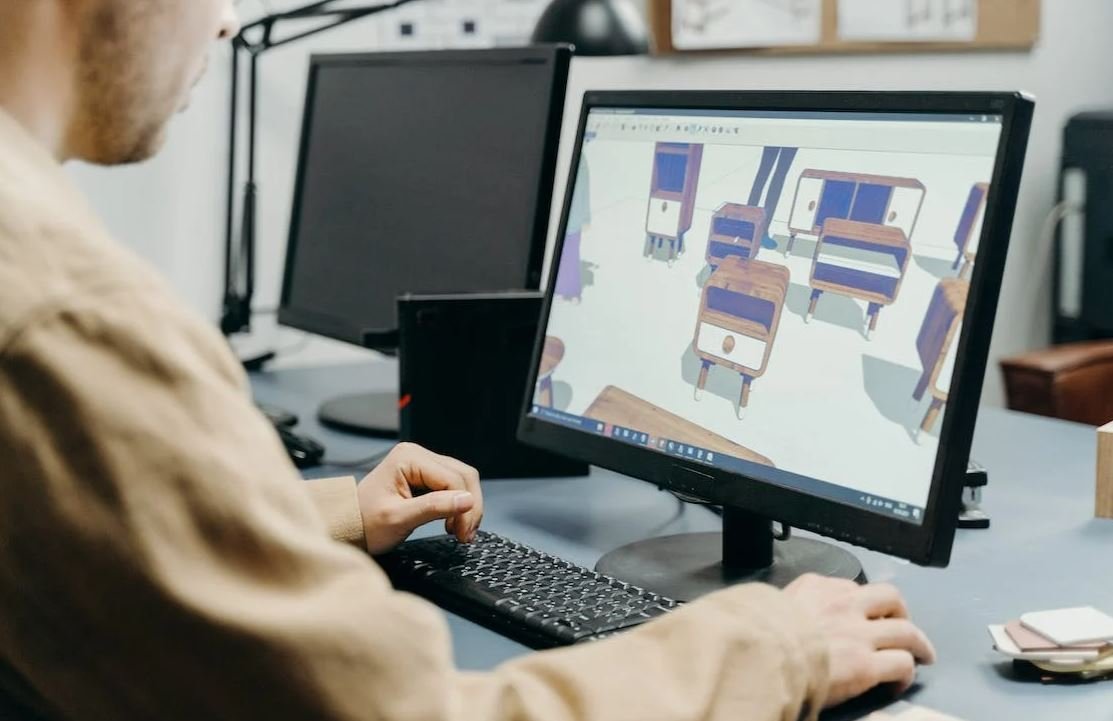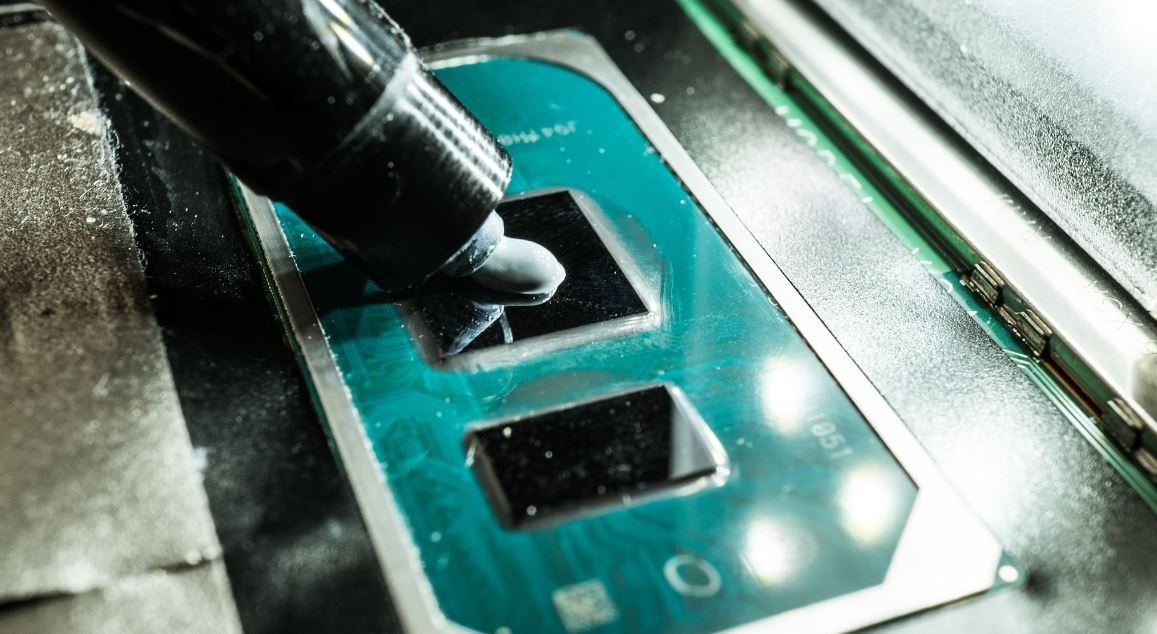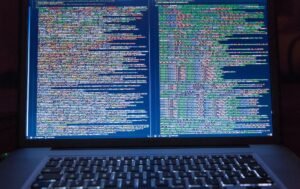AI Video Processing
Artificial Intelligence (AI) has revolutionized the field of video processing, enabling advanced capabilities that were unimaginable just a few years ago. With AI-powered algorithms and deep learning techniques, video content can now be analyzed, enhanced, and transformed with remarkable precision and speed. Whether it’s for video editing, surveillance, or video streaming, AI video processing offers tremendous potential for various industries.
Key Takeaways:
- AI video processing utilizes advanced algorithms and deep learning techniques.
- It offers enhanced video analysis, editing, and streaming capabilities.
- The technology has applications in industries such as surveillance and entertainment.
The Power of AI in Video Processing
**AI video processing** leverages the power of **machine learning** to extract meaningful information from video content. By automatically detecting and analyzing visual elements such as objects, faces, and scenes, AI algorithms can generate valuable insights and enable a wide range of applications. With the ability to understand and interpret video data, AI systems can offer enhanced functionalities and automate complex tasks that were traditionally time-consuming or required human intervention.
| Application | Description |
|---|---|
| Video Surveillance | AI algorithms can monitor and analyze video feeds in real-time to detect suspicious activities or objects. |
| Video Editing | AI can automate video editing processes, such as scene detection, object removal, and color correction. |
| Video Streaming | AI-powered video streaming platforms can optimize video quality, adapt to network conditions, and enhance user experience. |
The Benefits of AI Video Processing
*AI video processing* offers numerous benefits for various industries and applications. Here are some key advantages:
- Improved Efficiency: AI-powered video processing can automate repetitive tasks, saving time and resources.
- Enhanced Accuracy: AI algorithms can analyze video data with precision, enabling accurate object detection, tracking, and recognition.
- Real-time Analysis: With the ability to process video in real-time, AI systems can provide instantaneous insights and responses.
| Technique | Advantages | Disadvantages |
|---|---|---|
| Traditional Processing | – Well-established techniques – Less computational resources required |
– Limited capabilities – Manual intervention often necessary |
| AI Video Processing | – Advanced capabilities – Automation and efficiency – Real-time analysis |
– Higher computational requirements – Potential privacy concerns |
The Future of AI Video Processing
As AI technologies continue to evolve, the future of video processing looks promising. Advancements in hardware acceleration and cloud computing are making AI video processing more accessible and scalable. With the increasing availability of labeled video datasets and the ongoing research in deep learning, AI algorithms are constantly improving. This opens up possibilities for innovative applications and transformative advancements in video processing across various industries.
Conclusion
The integration of AI in video processing has revolutionized the way we analyze, edit, and stream videos. From enhancing security systems to optimizing video streaming platforms, AI-powered algorithms offer unprecedented advantages. With the potential for automation, accuracy, and real-time analysis, AI video processing is set to transform numerous industries and pave the way for exciting advancements in the future.

Common Misconceptions
Misconception 1: AI Video Processing is completely automated
One common misconception about AI video processing is that it is a completely automated process that requires no human intervention. While AI technology plays a significant role in video processing, human involvement is still necessary to set up the system, train the AI algorithms, and monitor the results. AI video processing is a combination of intelligent algorithms and human decision-making.
- AI video processing requires human intervention for setup and training.
- Human involvement is necessary to monitor the accuracy and effectiveness of AI algorithms.
- AI technology complements human decision-making in video processing tasks.
Misconception 2: AI Video Processing can completely replace humans
Another misconception is that AI video processing has the ability to completely replace humans in video analysis tasks. While AI technology has made significant advancements in detecting and analyzing objects, scenes, and actions in videos, it still cannot replace human judgment and reasoning. AI video processing is most effective when used in collaboration with human experts to make informed decisions.
- AI technology cannot replicate human judgment and reasoning in video analysis.
- Human expertise is crucial in interpreting and drawing insights from video data.
- AI video processing works best when combined with human decision-making.
Misconception 3: AI Video Processing is error-free
Many people believe that AI video processing is error-free and can provide 100% accurate results. However, like any technology, AI algorithms used in video processing can still make mistakes and have limitations. Factors such as low-quality video inputs, complex scenes, and unusual lighting conditions can impact the accuracy of AI video processing solutions.
- AI video processing algorithms are not immune to errors and limitations.
- Low-quality video inputs can affect the accuracy of AI video processing.
- Complex scenes and unusual lighting conditions might impact the performance of AI algorithms in video processing.
Misconception 4: AI Video Processing only works in controlled environments
Some people assume that AI video processing can only work in controlled environments and cannot handle real-world scenarios. However, AI technology has evolved to be adaptable and robust, allowing it to analyze and process videos in various settings, including dynamic and unpredictable environments. AI video processing can handle complex situations, such as crowded scenes, fast-moving objects, and changing lighting conditions.
- AI video processing can analyze videos in dynamic and unpredictable environments.
- The technology is capable of handling complex scenarios, including crowded scenes and fast-moving objects.
- AI algorithms can adapt to different lighting conditions in video processing tasks.
Misconception 5: AI Video Processing invades privacy
One misconception surrounding AI video processing is that it invades privacy by constantly recording and analyzing people’s actions. However, AI video processing can be implemented responsibly and ethically, with measures in place to protect privacy. By anonymizing and encrypting data, limiting access to authorized personnel, and adhering to legal and ethical guidelines, AI video processing can be used without violating privacy rights.
- AI video processing can be implemented with privacy protection measures in place.
- Proper data anonymization and encryption safeguards privacy in AI video processing.
- Adhering to legal and ethical guidelines ensures responsible use of AI video processing technology.

Advantages of AI Video Processing
AI video processing offers numerous benefits in various industries. It can improve efficiency, accuracy, and productivity in video analysis tasks. Here are some advantages of using AI video processing:
| Advantage | Description |
|---|---|
| Real-time object detection | AI algorithms can detect and track objects in videos in near real-time, enabling applications such as surveillance and autonomous driving. |
| Automatic video summarization | AI can analyze lengthy videos and generate concise summaries, saving time for viewers and facilitating content search. |
| Improved video search | By understanding video content, AI makes it easier to search for specific scenes or objects within a video, revolutionizing media management. |
| Enhanced video compression | AI can optimize video compression algorithms, reducing file sizes while maintaining quality, thus enabling efficient storage and transmission. |
| Precise action recognition | AI models trained on large datasets enable accurate identification of actions performed in videos, assisting in various domains, such as sports analysis or healthcare. |
Applications of AI Video Processing
AI video processing technology finds applications in multiple fields, benefitting society across various domains. Here are some notable applications:
| Application | Description |
|---|---|
| Video surveillance | AI-powered surveillance systems can detect and analyze suspicious activities, enhancing security and crime prevention efforts. |
| Medical imaging analysis | AI algorithms can analyze medical videos and images, aiding doctors in diagnosing diseases and identifying potential health issues. |
| Autonomous vehicles | AI video processing is crucial for autonomous vehicles to recognize and respond to their surroundings, ensuring safe navigation on roads. |
| Video content moderation | AI can automatically detect and filter out inappropriate or harmful content from video platforms, protecting users from harmful experiences. |
| E-commerce product recommendation | AI video processing enables product recommendation systems to analyze videos and suggest relevant items to customers, enhancing shopping experiences. |
Challenges in AI Video Processing
While AI video processing offers tremendous potential, it also faces certain challenges that researchers and developers strive to overcome:
| Challenge | Description |
|---|---|
| Large data requirements | Training AI models for video processing usually requires vast amounts of labeled video data, leading to computational and storage challenges. |
| Computational complexity | Performing video analysis using AI techniques can be computationally demanding, requiring powerful hardware and optimized algorithms. |
| Model interpretability | Understanding how AI models process videos and make decisions is still an active research area, as in many cases, they operate as black boxes. |
| Privacy concerns | Processing videos using AI algorithms can raise privacy concerns as sensitive or personal information might be inadvertently exposed or misused. |
| Limited generalization | While AI models can perform excellently on certain tasks, their ability to generalize and apply learned knowledge to new scenarios still has room for improvement. |
AI Video Processing Tools and Frameworks
A variety of tools and frameworks have been developed to facilitate the implementation and deployment of AI video processing solutions:
| Tool/Framework | Description |
|---|---|
| OpenCV | An open-source computer vision library that provides a range of tools and algorithms for image and video analysis, including face detection and object tracking. |
| TensorFlow | A popular open-source library for machine learning, often used for training and deploying complex AI models, including those for video-related tasks. |
| PyTorch | Another widely used open-source deep learning framework that offers flexibility and ease-of-use, supporting various video processing tasks with pre-trained models. |
| Keras | A high-level neural networks API running on top of TensorFlow, simplifying the creation of AI models for tasks like video classification or object detection. |
| Caffe | A deep learning framework known for its efficiency in both training and deployment, popularly used for video-related applications in research and industry. |
AI Video Processing and Productivity
AI video processing technologies have the potential to significantly boost productivity across various industries:
| Industry | Productivity Gains |
|---|---|
| Manufacturing | Using AI video processing for quality control enables faster and more accurate defect detection on production lines, reducing waste and improving overall efficiency. |
| Retail | AI-powered video analytics systems can track customer behavior, optimize store layouts, and analyze foot traffic, leading to better shopping experiences and increased sales. |
| Healthcare | Auxiliary diagnostic support from AI video processing allows healthcare professionals to focus on critical cases, increasing patient throughput and reducing diagnosis time. |
| Transportation | AI-based video surveillance systems enhance safety and security in public transportation, preventing incidents and improving the overall passenger experience. |
| Entertainment | AI-powered video editing tools streamline post-production processes, automating tasks like scene classification, special effects, and caption generation. |
Ethical Considerations in AI Video Processing
As AI video processing becomes more prevalent, ethical considerations must be addressed to ensure responsible development and deployment:
| Ethical Aspect | Description |
|---|---|
| Privacy and consent | When processing videos, it is essential to obtain consent from individuals, respect their privacy, and implement appropriate security measures to protect personal data. |
| Algorithmic bias | AI models trained on biased data can perpetuate and amplify societal biases, necessitating diverse training datasets and thorough evaluation of algorithmic fairness. |
| Job displacement | The implementation of AI video processing systems may lead to potential job losses, requiring reskilling programs and policies to support workforce transition. |
| Transparency | Ensuring transparency in how AI models process videos and make decisions is crucial for building trust, facilitating audits, and addressing potential biases or errors. |
| Accountability | Establishing clear accountability for AI video processing systems, including responsibility for errors or unintended consequences, aids in ethical decision-making. |
AI Video Processing and Media Production
The integration of AI video processing techniques in media production workflows revolutionizes content creation:
| Media Production Aspect | Integration with AI |
|---|---|
| Video editing | AI algorithms can analyze video footage to identify optimal scenes, automate editing tasks, and even generate machine-assisted narratives. |
| Post-production effects | With AI, intricate special effects, such as green screen removal and deepfake detection, can be streamlined, reducing manual effort and enhancing quality. |
| Content recommendation | AI video analysis enables personalized content recommendations to be made, increasing engagement and tailoring user experiences in video streaming platforms. |
| Automated captioning | AI models can automatically generate subtitles and closed captions, benefiting individuals with hearing impairments and improving accessibility. |
| Media indexing | By automatically analyzing video content, AI powers efficient content indexing and tagging, facilitating content searchability and archival processes. |
AI Video Processing and Creative Industries
AI video processing techniques empower creative professionals, offering new possibilities for expression and artistic exploration:
| Creative Aspect | Applications of AI |
|---|---|
| Virtual reality (VR) | AI algorithms can enhance VR experiences by improving tracking, rendering realistic environments, and generating interactive content. |
| Augmented reality (AR) | AI video processing enables accurate tracking and object recognition for AR applications, fostering immersive and interactive user experiences. |
| Video art | AI-based tools allow artists to create innovative video installations, generate dynamic visual effects, and explore new creative possibilities. |
| Animation | AI-assisted animation techniques can streamline 2D or 3D animation production, automating repetitive tasks and accelerating storytelling processes. |
| Interactive media | AI video processing facilitates the creation of interactive media projects that respond dynamically to user input, offering engaging and personalized experiences. |
Future Trends in AI Video Processing
The future of AI video processing holds promising advancements and exciting possibilities:
| Trend | Description |
|---|---|
| Real-time video translation | AI systems capable of translating spoken words in videos into different languages in real-time, allowing seamless multilingual communication. |
| Emotion recognition | Advancements in AI algorithms will enable more accurate detection and interpretation of human emotions from video content, benefiting areas like mental health or user sentiment analysis. |
| Video-based human-computer interaction | AI video processing will enable more natural and intuitive ways of interacting with computers through gestures, expressions, and eye-tracking in video-based interfaces. |
| Deepfake detection and prevention | As deepfake technology evolves, AI will play a crucial role in developing robust detection methods and countermeasures to combat misinformation and manipulation. |
| Realistic video synthesis | AI video synthesis techniques will become more advanced, allowing for the generation of highly realistic videos in scenarios where capturing footage is challenging or impossible. |
Conclusion
AI video processing technology has revolutionized multiple industries, offering a wide range of advantages such as real-time object detection, automatic video summarization, and enhanced video compression. Its applications span video surveillance, healthcare, autonomous vehicles, e-commerce, and more. However, challenges related to data requirements, computational complexity, and privacy must be tackled. Multiple tools and frameworks facilitate the implementation of AI video processing systems. With responsible development, AI video processing can boost productivity, transform media production, and empower creative industries. Ethical considerations, transparency, and accountability are essential aspects to address. The future holds promising trends, including real-time video translation, emotion recognition, and realistic video synthesis. As AI video processing evolves, it has the potential to shape the way we interact with videos, opening up new opportunities and enhancing the user experience.
Frequently Asked Questions
What is AI video processing?
AI video processing refers to the use of artificial intelligence algorithms and techniques to analyze and manipulate video content. It involves tasks such as object detection, video summarization, action recognition, and content generation.
How does AI video processing work?
AI video processing typically involves three main steps: preprocessing, feature extraction, and decision-making. Preprocessing involves preparing the video data for analysis, cleaning noise, and enhancing image quality. Feature extraction involves extracting meaningful features from the video frames, such as motion, texture, or object appearance. Finally, decision-making involves using AI algorithms to classify and interpret the extracted features to perform specific tasks.
What are the applications of AI video processing?
AI video processing has a wide range of applications, including video surveillance, video analytics, video editing, virtual reality, augmented reality, and content generation for movies and games. It can also be used in industries like healthcare, education, entertainment, and transportation for various purposes.
What are some examples of AI video processing algorithms?
There are several AI video processing algorithms commonly used, such as Convolutional Neural Networks (CNNs) for object detection and recognition, Recurrent Neural Networks (RNNs) for video captioning and summarization, and Generative Adversarial Networks (GANs) for video synthesis and content generation.
What are the benefits of using AI video processing?
AI video processing offers numerous benefits, including faster and more accurate video analysis, automated video editing and content generation, improved video surveillance and security, enhanced user experiences in virtual reality and augmented reality environments, and overall efficiency gains in various industries.
Are there any limitations or challenges in AI video processing?
Yes, AI video processing still faces some challenges and limitations. These include the need for large labeled datasets for effective training, high computational requirements, potential biases and errors in algorithms, and ethical concerns related to privacy and data usage. Additionally, handling real-time processing and gaining a deep understanding of complex video content are ongoing challenges.
Can AI video processing be used for real-time applications?
Yes, AI video processing can be used for real-time applications. However, it requires powerful hardware and optimized algorithms to process video frames in real-time. Real-time applications include video surveillance systems, autonomous vehicles, and live streaming platforms.
Is AI video processing only applicable to high-quality videos?
No, AI video processing can handle videos of different qualities, including low-quality and noisy videos. However, the accuracy and performance of the algorithms may be affected by the quality of the input video. Preprocessing techniques can be used to improve the quality of lower-quality videos before applying AI video processing algorithms.
How can I get started with AI video processing?
To get started with AI video processing, you can begin by learning the fundamentals of computer vision, machine learning, and deep learning. Familiarize yourself with relevant programming languages such as Python and frameworks like TensorFlow or PyTorch. Additionally, explore available online courses, tutorials, and research papers to gain practical knowledge and hands-on experience in AI video processing.
What are some popular tools and libraries for AI video processing?
There are several popular tools and libraries available for AI video processing, such as OpenCV, TensorFlow, PyTorch, Keras, Caffe, and MXNet. These tools provide a wide range of functionalities and pre-trained models for video analysis, processing, and content generation.




